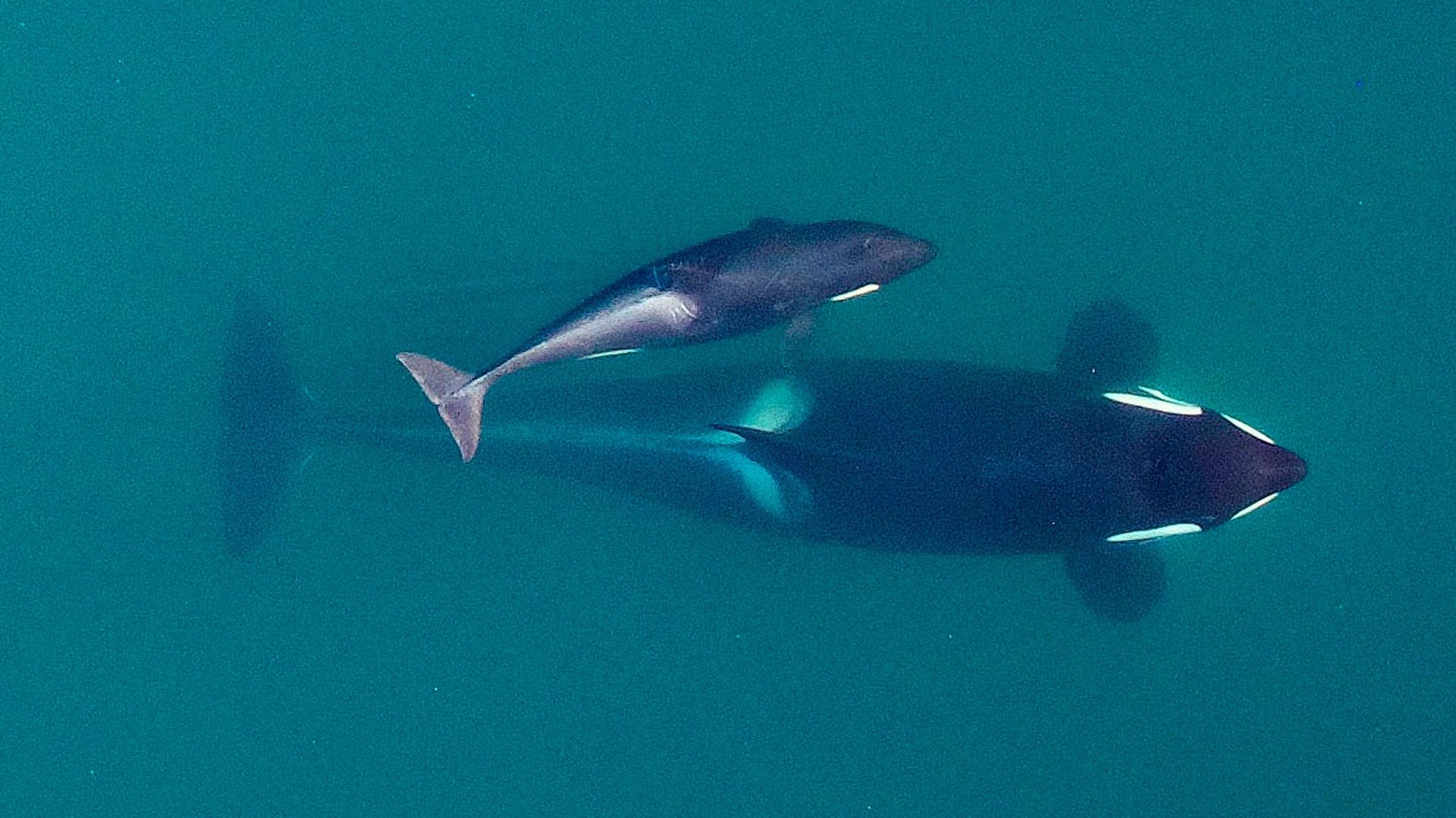A mother orca’s “tour of grief” reminds us how much we have in common with animals
An orca in the northwest waters of the Pacific has been swimming with her dead calf and keeping it afloat for 16 days—a display of motherly grief that has struck an emotional chord around the world while highlighting the plight of the critically endangered southern resident population of orcas.


An orca in the northwest waters of the Pacific has been swimming with her dead calf and keeping it afloat for 16 days—a display of motherly grief that has struck an emotional chord around the world while highlighting the plight of the critically endangered southern resident population of orcas.
The 20-year-old orca, known as J35 or Tahlequah, gave birth to a female calf on July 24. The baby orca died only a few minutes later. Keeping the calf’s lifeless body afloat atop her head, Tahlequah has been swimming through choppy seas for more than two weeks, as of August 10, the pair’s last known sighting:
The pair’s journey has been described by observers and orca researchers as a “tour of grief.” That’s because the obvious bond between mother and child orca–what’s known as “nurturant behavior” towards a dead calf–reminds us of our own human mother-child instincts. To see J35 grieving her dead child is to imagine ourselves going through the same process; hence the global outpouring of empathy for the whale. And on a fundamental level, the orca’s evident bond with her child reminds us of how much we have in common with other animals.
Orcas grieve and love, too
As Susan Casey, an author who has written several books about ocean life, writes in The New York Times, “To learn the orcas’ natural and cultural history is to understand how closely connected a mother and calf are, how tight-knit their bond.” Mother orcas have a unique bond with their offspring, who rarely leave their mothers’ sides. That bond is heartbreakingly evident in cases that involve death. A 2012 study found that the death of a mother orca meant an eightfold increase in the likelihood of death within a year for males over the age of 30. And we know that killer whales grieve their dead: A 2016 study collected evidence of 14 instances of adults displaying care and affection toward dead calves, across seven species, in seven different geographic regions.
While that aspect of the orcas’ mother-child bond is unique, killer whales also share some things in common with humans. For example, mother orcas tend to cradle their newborns on the left, like humans do. That’s because the position activates the right hemisphere of the brain, which controls communication and bonding functions.
Orcas are also one of just a few species that go through menopause. Scientists believe there’s a purpose to that: Older female orcas can then help provide for their families and make sure their genes are passed on to future generations. The value of having an older, post-menopausal matriarch in the family is known in humans as the “grandmother hypothesis.” As Casey writes:
The matriarchs serve as midwives, babysitters, navigators and teachers. Orca mothers, grandmothers and great-grandmothers pass on so much essential knowledge that calves removed from their influence are as ill-equipped for wild orca life as children raised by wolves would be if dropped into Midtown Manhattan.
Seeing Tahlequah grieve her daughter also reminds us that her group of 75 orcas, which has not seen a successful birth since 2015, is critically endangered. She is not the first orca mother to grieve a child, nor will she be the last. According to the Center for Whale Research, “approximately 75% of newborns in the recent two decades following designation of the Southern Resident killer whale population as ‘endangered’ have not survived, and 100% of the pregnancies in the past three years have failed to produce viable offspring.”
While it’s natural to empathize with Tahlequah’s grief, environmental advocates say the best thing to do is to channel these emotions into efforts that can help these mammals. For those who would like to help, Friends of the San Juans have compiled a list of what can be done to support Southern Resident killer whales like Tahlequah, including preserving the shorelines where they forage for food by lobbying elected officials. And keep caring. As The Whale Museum advised in a statement, “In six months when these events may not be in the spotlight, remember the feeling you have right now.”
This post has been updated.